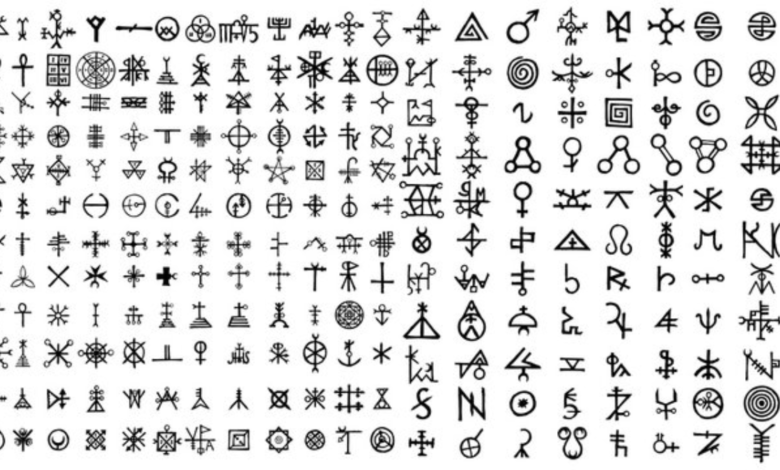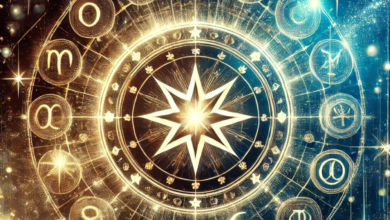Understanding the Star Character Symbol: Its History, Usage, and Significance

Introduction
The star symbol has been a significant part of human history for centuries. From ancient civilizations to modern-day technology, the star character has found its way into art, culture, science, and even everyday communication. But what exactly is the “star character ,” and how has it evolved over time? In this article, we’ll take an in-depth look at the star history, its modern uses, and why it holds such enduring importance in different fields of life.
1. The Origin of the Star Symbol
The star symbol has roots that date back thousands of years, with its first appearances in various ancient cultures. Some of the earliest depictions of star-like can be found in cave paintings and ancient Egyptian hieroglyphs, everything from celestial bodies to gods.
1.1 Ancient Civilizations and Star Symbolism
In ancient Egypt, the star symbol often represented divine beings, with stars being associated with gods and the afterlife. The most famous example might be the “star of Bethlehem” in Christian tradition, a symbol tied to the birth of Jesus Christ.
Similarly, ancient Mesopotamian cultures used star symbols to track celestial movements and predict seasons. The Sumerians, Babylonians, and Assyrians all utilized star-like images as part of their astronomical studies.
1.2 The Star in Mythology and Religion
Across many cultures, stars were believed to be the homes of gods or spirits. For example, the Greeks viewed the stars as the abode of the gods on Mount Olympus. The mythology around stars often revolved around the idea that these bright points in the night sky had a supernatural quality, providing guidance and protection to those on Earth.
Religions around the world have also adopted the star , each giving it a unique meaning. In Christianity, the Star of David represents the Jewish faith, while the star of Bethlehem is central to the nativity story.
2. The Star Character in Modern Communication
With the advent of the digital age, the star symbol has found new meanings and uses. From the asterisk (*) to the star emoji (⭐), this small character is now ubiquitous in communication, whether through texting, social media, or even programming.
2.1 The Rise of the Asterisk
In the world of computers, the asterisk () is the most widely recognized star . It is commonly used as a wildcard character in computer science, representing any character or number in certain contexts. For example, in a search engine, typing “” might retrieve all results related to your search query.
2.2 The Star Symbol on Social Media
When it comes to social media, the star symbol is often used to signify “favorites” or “likes.” From Twitter’s star-shaped “favorite” icon to the starry “rating” system found on sites like Amazon or Yelp, this symbol has become a staple in our online interactions.
2.3 The Star Emoji
One of the most popular uses of the star character today is as an emoji. The “star” emoji (⭐) represents many things, from excellence and positivity to dreams and aspirations. It’s often used to convey happiness or excitement, and it has become a way of expressing appreciation or admiration in text form.
3. The Asterisk Symbol: A Star with Special Significance
Though the asterisk looks like a star, it has a specific, distinct meaning in various contexts. While often linked to the broader category of “star ,” its use is especially prevalent in technology, mathematics, and linguistics.
3.1 The Asterisk in Programming
The asterisk plays a critical role in the world of computer programming. As mentioned earlier, it’s used as a wildcard, but its function extends far beyond this simple role. In languages like C and Python, the asterisk is used to represent pointers, multiplication, and even variable unpacking.
The asterisk’s versatility has made it an indispensable tool in programming syntax, enabling developers to write more efficient and flexible code. It’s particularly useful in working with arrays and complex data structures.
3.2 The Asterisk in Mathematics and Linguistics
In mathematics, the asterisk often serves as a shorthand for multiplication. For example, in algebraic expressions or coding languages, the asterisk can replace the traditional multiplication symbol (×). In linguistic studies, the asterisk is used to indicate a reconstructed word or form in historical linguistics.
4. Star Symbolism in Pop Culture
The star symbol has had a profound influence on pop culture. From the Hollywood Walk of Fame to the iconic five-pointed star in popular logos, this simple shape has become synonymous with fame, success, and recognition.
4.1 The Hollywood Walk of Fame
One of the most well-known uses of the star is in the Hollywood Walk of Fame. In this context, the star represents achievement in the entertainment industry, with over 2,600 stars dedicated to the most influential and celebrated figures in film, television, music, and more.
4.2 The Five-Pointed Star in Logos and Branding
The five-pointed star is widely used in company logos, often signifying prestige or excellence. It’s a popular choice for brands that want to convey a sense of authority, leadership, and reliability. Companies in the luxury goods sector, as well as those in sports, frequently incorporate stars into their logos.
4.3 The Star in Fashion and Music
Stars also play a significant role in fashion and music. Pop stars, for instance, are frequently associated with stars in the media, and the star often appears in their album covers, clothing, or stage designs. The use of the star reflects a sense of glamour, popularity, and success.
5. The Star Symbol in Astronomy and Science
Beyond its symbolic uses, the star is a fundamental concept in the world of science, especially in astronomy. Stars are massive celestial bodies that emit light and energy, and they have captivated scientists and stargazers for centuries.
5.1 The Nature of Stars
At its core, a star is a ball of gas that produces light and heat through nuclear fusion. The process of fusion occurs in the core of the star, where immense pressure and temperature cause hydrogen atoms to fuse into helium. This release of energy is what powers stars like our Sun and makes them shine so brightly.
5.2 The Life Cycle of a Star
Stars go through a fascinating life cycle, from their formation in dense clouds of gas and dust to their eventual death. Depending on their size, stars can end their lives as white dwarfs, neutron stars, or black holes, leaving behind a variety of cosmic remnants. The study of stars has been essential in understanding the nature of the universe itself.
5.3 Stars and Navigation
Before the advent of modern navigation technology, sailors used the stars to navigate the oceans. The North Star (Polaris) was particularly important because it remained relatively fixed in the sky, helping travelers orient themselves on their journey. Even today, stargazing is a popular hobby for many who want to learn more about the universe.
6. The Star in Geometry and Art
While the star symbol is often seen as something celestial or abstract, it also has a place in art and geometry. The geometric star shape, commonly seen as a pentagram or a six-pointed star, has inspired artists, architects, and designers for centuries.
6.1 Geometric Stars: From the Pentagon to Sacred Geometry
The five-pointed pentagram is one of the most famous geometric stars, often associated with ancient cultures and symbolism. It has been used in various spiritual practices, such as Wicca and Freemasonry. In these contexts, the pentagram is often seen as a symbol of protection and balance.
In sacred geometry, the star shape is believed to represent harmony and the interconnectedness of all things. Artists throughout history have used the star as a way to express divine proportion and balance in their works.
6.2 The Star in Modern Art and Design
In contemporary art, the star has been used to evoke different emotions and ideas. It appears in abstract works, as well as in more representational pieces, often hope, inspiration, or the concept of striving for greatness. Designers also use stars in modern graphic design to add visual interest and convey a sense of celebration or achievement.
7. The Future of the Star Symbol
As we continue to progress into the future, the star is likely to evolve and take on new meanings. With advancements in space exploration and technology, stars could become even more central to human experience.
7.1 Stars and Space Exploration
As humanity looks toward space exploration, the symbolism of stars may take on new relevance. The discovery of exoplanets, for example, could lead to new understandings of how stars support life beyond Earth. As technology evolves, the star symbol might come to represent human aspiration and our quest to explore the cosmos.
7.2 The Digital Evolution of the Star
In the digital age, the star symbol will likely continue to thrive, whether it’s in emojis, ratings, or other online expressions. It’s possible that new forms of the star symbol will emerge, adapting to the changing ways people communicate, share experiences, and interact with technology.
Conclusion
The star character symbol is more than just a shape or sign; it’s a multifaceted with deep historical, cultural, and scientific significance. From ancient civilizations to the digital age, the star has evolved, yet it continues to hold a universal appeal. Whether used in religious contexts, modern-day technology, or artistic expressions, the star remains a powerful and enduring of hope, guidance, and achievement.





